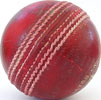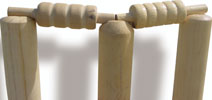

Video footage is being used increasingly in sport to facilitate refereeing or umpiring decisions. This technology is seen to provide evidence to assist in accurate decision-making.
It seems to have been relatively successful in tennis where the ball is determined to have either landed within the field of play or outside the line. In rugby, things are a little more complicated, and we see things like continual replays to see if a player’s foot crossed over the sideline in the process of scoring a try. Even then, there are usually still two schools of thought over the validity of the try at the end of the process.
In rugby, however, the possibility of viewing from different camera angles from around the ground can provide benefits for referees who have been partly unsighted and must make a decision in front of 50 000 screaming fans. In cricket, the complications of viewing and adjudicating on whether a batsman is out has led to far greater controversy recently. Successful or not, this use of video footage in the more public domain of sport has merely demonstrated issues which CCTV operators, managers, investigators and those involved in the legal process have been exposed to for some years.
I was doing some forensic analysis recently and after 30 minutes of viewing the available video repeatedly, at slow and faster motion, and zooming in and out, I had to conclude that I did not have the resolution and frames to allow me to stand up in court and give a definite statement on what had caused the event in question. Similarly, I have sat with personnel and viewed footage repeatedly to evaluate whether somebody has been trying to steal an item or just accidentally knocked it away.
In dealing with CCTV and investigations, we commonly come across situations where we have to work with inappropriate camera views, do not have enough cameras, struggle with resolution, find frame rate problems cause us to miss certain critical actions, and find that unclear operational requirements during installation or cameras being used beyond the capacity for which they were installed have resulted in questionable evidence.
Referee or umpiring decisions in sport do not have implications that are as critical as those involving guilt in crime – which may result in sending a person to jail, for example. However, sport decisions do have consequences in terms of reputation of those involved, national pride, potential careers and earnings, and even the reputation of the sport itself. The introduction of cameras into sport is now starting to have parallels with the presentation of evidence in crime and disciplinary cases where CCTV evidence is being used. The difference, however, is that cricket has not had the same amount of time to get things right, and third umpire decisions are watched by millions of people around the world. Cricket also has traditions going back over 100 years to overcome in how it is implementing technology-based decisions. These evidence type decisions are very different from those made by commentators, who seem to appear very wise after being able to watch a particular wicket after several replays, but would rarely be close to umpires’ accuracy if having to make the same call in the split second movements of the game. Even then, commentators may not agree with each other after watching the same footage. In an evidence-based environment, the issues of facts, fairness and conclusive proof take on far more weight, especially when audited by millions of armchair judges.
My initial impression of the way in which the cricket referrals were implemented was that the third umpire referral needed conclusive or irrefutable evidence that the original decision made by the umpire on field was incorrect in order to change it. In this sense, it equates with evidence and fact. Yet a number of referral decisions in recent cricket tours featuring England and West Indies, and Australia and South Africa were unusual because the decisions of the umpires off the field were less controversial than those of umpires reviewing video footage off the field. The way in which some referral decisions were implemented in my view and according to members of the press was based on a great deal of interpretation by the umpire.

Even in the relatively simple decision of determining run-outs, there is often doubt over whether the bat is on or over the line – in many instances, it is extremely difficult to clearly state this. The repeated viewing of the scene from different angles, slow motion replays etc is a clear indication of this. The view is not clear enough, additional frames would be useful to precisely evaluate where the bat is, closer views may be required etc. The problem is repeated with evaluating whether a player has genuinely taken a catch at times or whether the ball has hit the ground beforehand. When it comes to even finer distinctions as to whether the batsman has snicked the ball on the way through, or it touched the glove, things can get even more difficult to spot.
Issues seemed to come through for the cricketing implementation in several areas, in some cases reflecting the same difficulties that professional CCTV operations face:
1. The requirement of conclusiveness of evidence to overrule the field umpire was not followed. The referral umpire made interpretations on video evidence that moved into definite grey areas – into possibilities rather than facts. The rule should be if it cannot be clearly proven on the facts, it should not be overruled.
2. Technology usage and integration was a problem. The operational requirements of the cameras need to be defined and they need to do this job appropriately. Camera views and capabilities were not up to the job in some decisions. Further, the decision-maker needs the right technology to make the correct decisions. In the SA/Aus matches, for instance, the third umpire was attempting to work out whether the ball had nicked the bat without adequate video quality. Further supplementary technology such as hot spot or the 'snikometer' would have assisted the evidence gathering process. It also emphasises the need to have a fully functioning system with all elements operating. A failure to have part of the system working further undermines the whole system.
3. Too high expectations of use of the technology. Technology such as Hawkeye is not seen as 100% accurate, which is why it is not used as part of the third umpire referral evaluation. It is an estimate or projection of the line the ball is expected to travel. It is questionable whether the referral umpire can make any better decision with exactly the same video. Besides obvious cases of the ball striking the batsman too high, the umpire will suffer the same lack of knowledge of some critical aspects of ball movement and pitch response as Hawkeye. Cameras views are different to real life viewing which tends to give a richer and, in the case of field umpires, a more direct view of the action.
4. The level of confidence in decision-making also does not seem to have been clarified adequately. If an umpire has to view the video material repeatedly, it starts saying something about how sure he can be about the situation. Either the umpire is indecisive, or the evidence is not conclusive enough to make a clear decision. As I understand, the batsman is given the benefit of the doubt in the case of a field umpire being unsure of the decision. Having to view five or six times or even more, not only shows doubt, but it frustrates players and spectators and undermines the system. Importantly, umpires should not be scared to say, “I cannot tell from the available evidence” and go with the implications of this – usually giving the batsman the benefit of the doubt.
5. Use of a checklist to verify indicators has been given attention, but needs to be formalised to stand an audit from anybody from the match referee to Joe Blogs who is watching at the local pub. A systematic process to verify certain indicators will simplify the decision-making and make it a lot more transparent. The umpire can even score these to show they have been considered. For instance, in the case of a catch behind being checked for bat contact, we should see the no-ball situation checked, whether the ball is in line, whether the ball is deflected from the bat, whether the ball changes rotation, hot spot and snikometer verification and checking that the ball carries to the fielder. A series of unconfirmed or 'cannot be established' ratings would mean there is not conclusive evidence and the field umpire’s decision would stand.
6. The cricket authorities are clearly concerned about the extent to which requests for referrals could slow the game process. However, the use of off-field umpires does raise the principles of fairness and ethical implementation. Most people would agree that decision-making should be consistent. However, some may ask if it is used for adjudication in one situation, should it not be used when other errors occur that have not been referred, but which the referring umpire has spotted. If we are generating evidence, there is a strong argument for ensuring that it is fairly applied to all. If we see incidents being committed on town centre videos, and only those referred to us are investigated or reacted to, what would people think of the CCTV system?
The implementation of camera and other technology by sports and particularly cricket has mirrored the feelings of many security clients that it is a relatively simple technology to implement and will provide a quick uncomplicated solution. Perhaps one of the strongest points that came out of the cricketing experiences is that while video has great power in assisting us, it is not all-powerful and also has critical weaknesses.
Like any solution, it needs to be carefully thought through and prepared for, and expectations need to be managed. The nature of the interaction between people and technology needs to be structured and defined as clearly as possible so the final decision is as accurate as possible. There is a critical need for the training of umpires in the use, principles, and observation requirements for the system. Finally, all the controversy and discussions have shown that expert human judgment is perhaps more effective than many people thought.

Dr Craig Donald is a human factors specialist in security and CCTV. He is a director of Leaderware which provides instruments for the selection of CCTV operators, X-ray screeners and other security personnel in major operations around the world. He also runs CCTV Surveillance Skills and Body Language, and Advanced Surveillance Body Language courses for CCTV operators, supervisors and managers internationally, and consults on CCTV management. He can be contacted on +27 (0)11 787 7811 or [email protected]
| Tel: | +27 11 787 7811 |
| Email: | [email protected] |
| www: | www.leaderware.com |
| Articles: | More information and articles about Leaderware |

© Technews Publishing (Pty) Ltd. | All Rights Reserved.